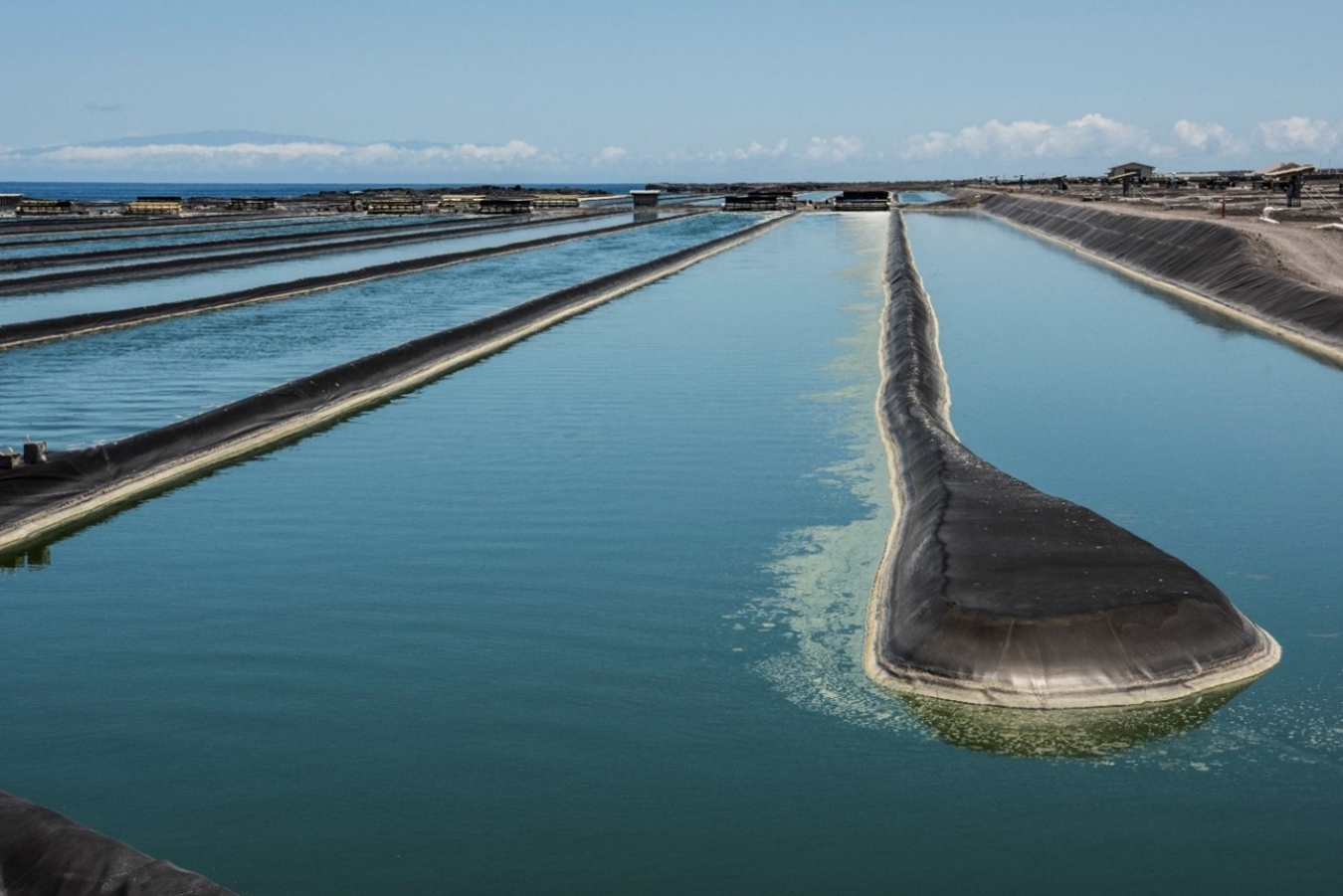A new report from the U.S. Department of Energy (DOE) national laboratories investigated the economic and environmental implications of siting and deploying large-scale microalgae farms for cultivation and conversion to biofuels and bioproducts. The report, “Economic, Greenhouse Gas, and Resource Assessment for Fuel and Protein Production from Microalgae: 2022 Algae Harmonization Update,” was developed by Argonne National Laboratory, National Renewable Energy Laboratory, and Pacific Northwest National Laboratory, with funding from DOE’s Bioenergy Technologies Office (BETO).
July 24, 2024
An example of Cyanotech’s microalgae cultivation raceway farm on the island of Hawaii. Photo by Dennis Schroeder/National Renewable Energy Laboratory.
A new report from the U.S. Department of Energy (DOE) national laboratories investigated the economic and environmental implications of siting and deploying large-scale microalgae farms for cultivation and conversion to biofuels and bioproducts. The report, “Economic, Greenhouse Gas, and Resource Assessment for Fuel and Protein Production from Microalgae: 2022 Algae Harmonization Update,” was developed by Argonne National Laboratory, National Renewable Energy Laboratory, and Pacific Northwest National Laboratory, with funding from DOE’s Bioenergy Technologies Office (BETO).
The harmonization assessment report focused on the technological potential to leverage non-competing available resources for land, saline water, and industrial waste carbon dioxide (CO2) sources across the southern United States to cultivate high-protein algal biomass for conversion into products like sustainable aviation fuels (SAF) and protein for food and feed applications.
Report highlights include:
- Total microalgae biomass production potential across the United States was estimated at 152 million tons per year (ash-free dry-weight, or AFDW), which reflects a CO2 utilization potential of 268 million tons per year.
- This cumulative potential could be enabled by nearly 1,000 viable algae farm sites located across southern regions1 in the United States, with an average targeted minimum biomass selling price of $674 per ton AFDW. While higher than projected prices for terrestrial biomass resources, this can be offset by the potential for higher fuel yields and high-value coproducts from algal protein or lipid fractions.
- As a case in point of such advantages, the study estimated that fuels could be produced for less than $4 per gallon gasoline equivalent (GGE) from this biomass resource for cases including co-production of algal protein for the food market (subject to protein market sizes and values), excluding any policy incentives.
- When coupled with reduced emissions electricity sources such as wind or solar, algal fuel and protein coproduction could achieve a 50% emissions reduction compared to conventional fuel and soy protein or a more substantial 90% reduction compared with conventional fuel and whey protein.2 Meanwhile, a fuel-only algal system with reduced emissions electricity could achieve emissions reductions of 70%.
- Under today’s U.S. average grid electricity, algal fuel and protein co-production can achieve a 70% reduction in emissions compared with conventional fuel and whey protein2; however, the algal fuel and protein emissions are still higher than those for conventional fuel and today’s highly efficient soy protein production, highlighting interdependencies between reduced emissions fuel and power systems.
- Algal SAF fuel potential could reach between 5–9 billion GGE/year (with higher total fuel potential) depending on market limitation scenarios for protein co-production, contributing up to 25% of the 2050 SAF Grand Challenge goal of 35 billion gallons SAF per year. Such volumes could support roughly 1–2 million hours of flight time on SAF annually for a typical commercial airline.
This latest analysis is reflected in BETO’s recently published 2023 Billion-Ton Report in Chapter 7: Emerging Resources: Microalgae, Macroalgae, and Point-Source Carbon Dioxide Waste Streams.
In addition, this analysis may be leveraged to help inform jet fuel production from microalgae supporting SAF Grand Challenge 2030 and 2050 goals.
Download the Algae Harmonization Report here.
1This encompasses the southern United States, generally below the 37th parallel latitude between southern California through Texas, Louisiana, and Florida.
2It is important to note that displacing whey protein in the market may not eliminate the emissions associated with its production. Whey may still be produced as a byproduct of cheese production even if algal protein attains a significant portion of the protein market.

